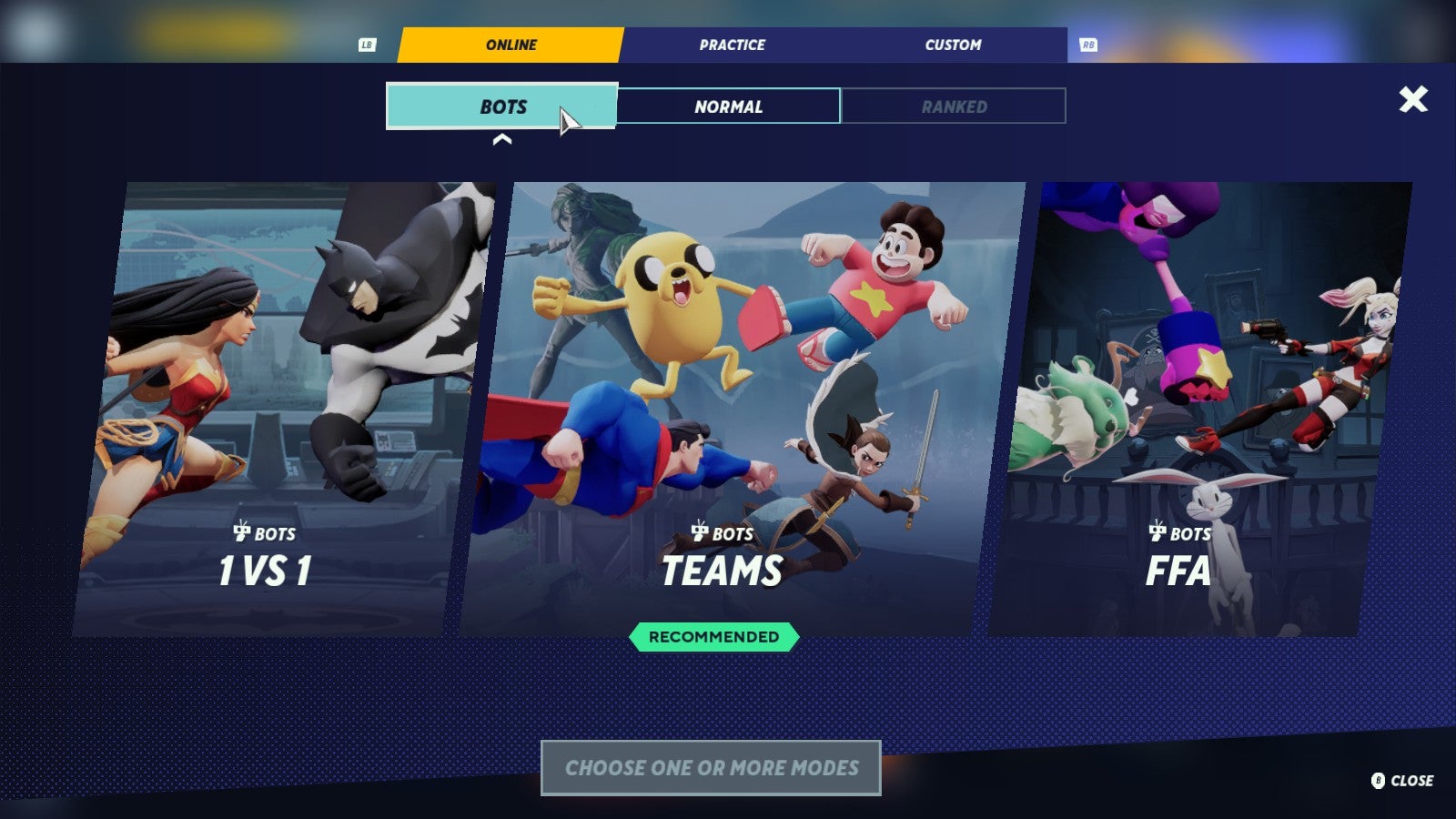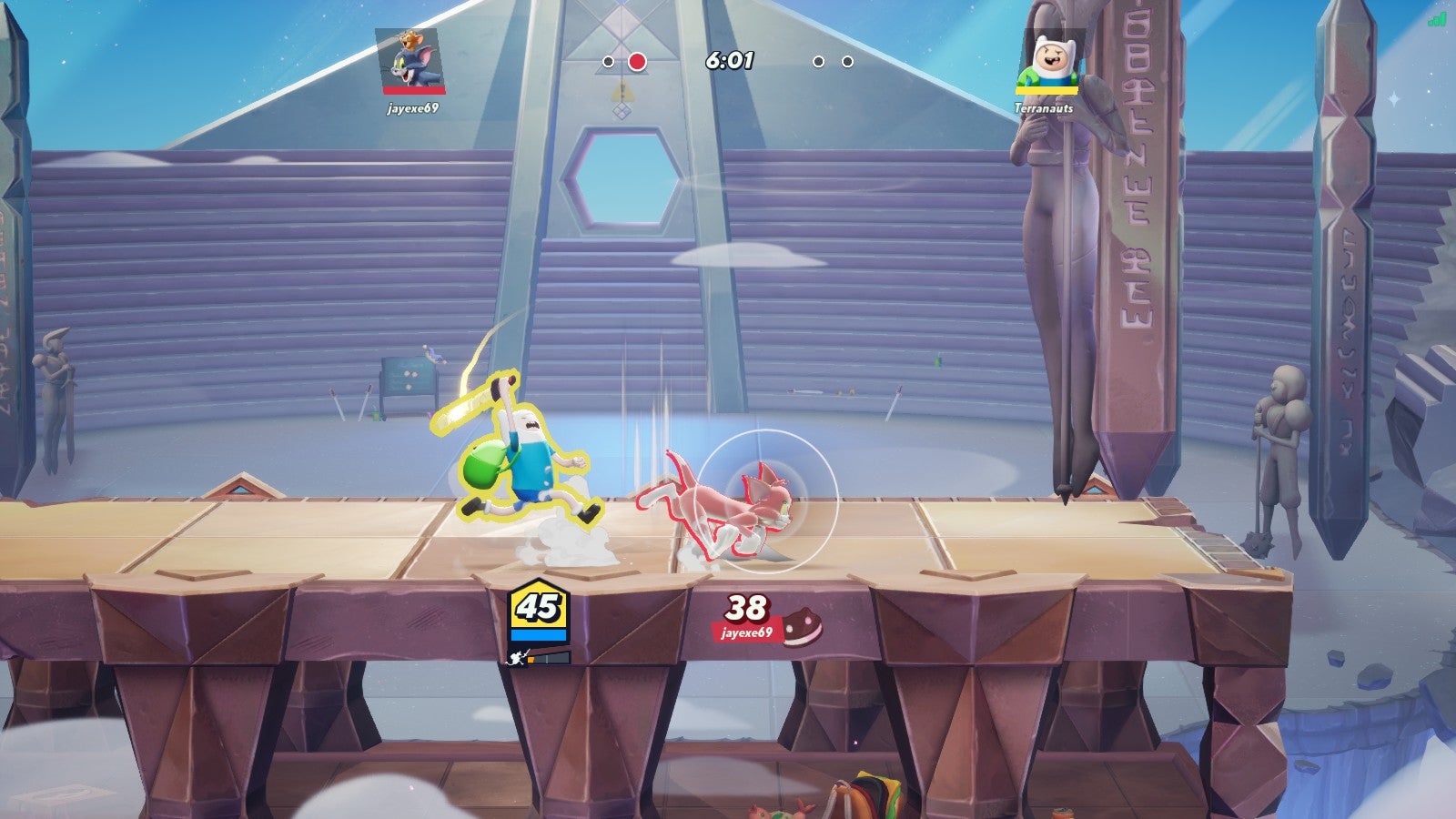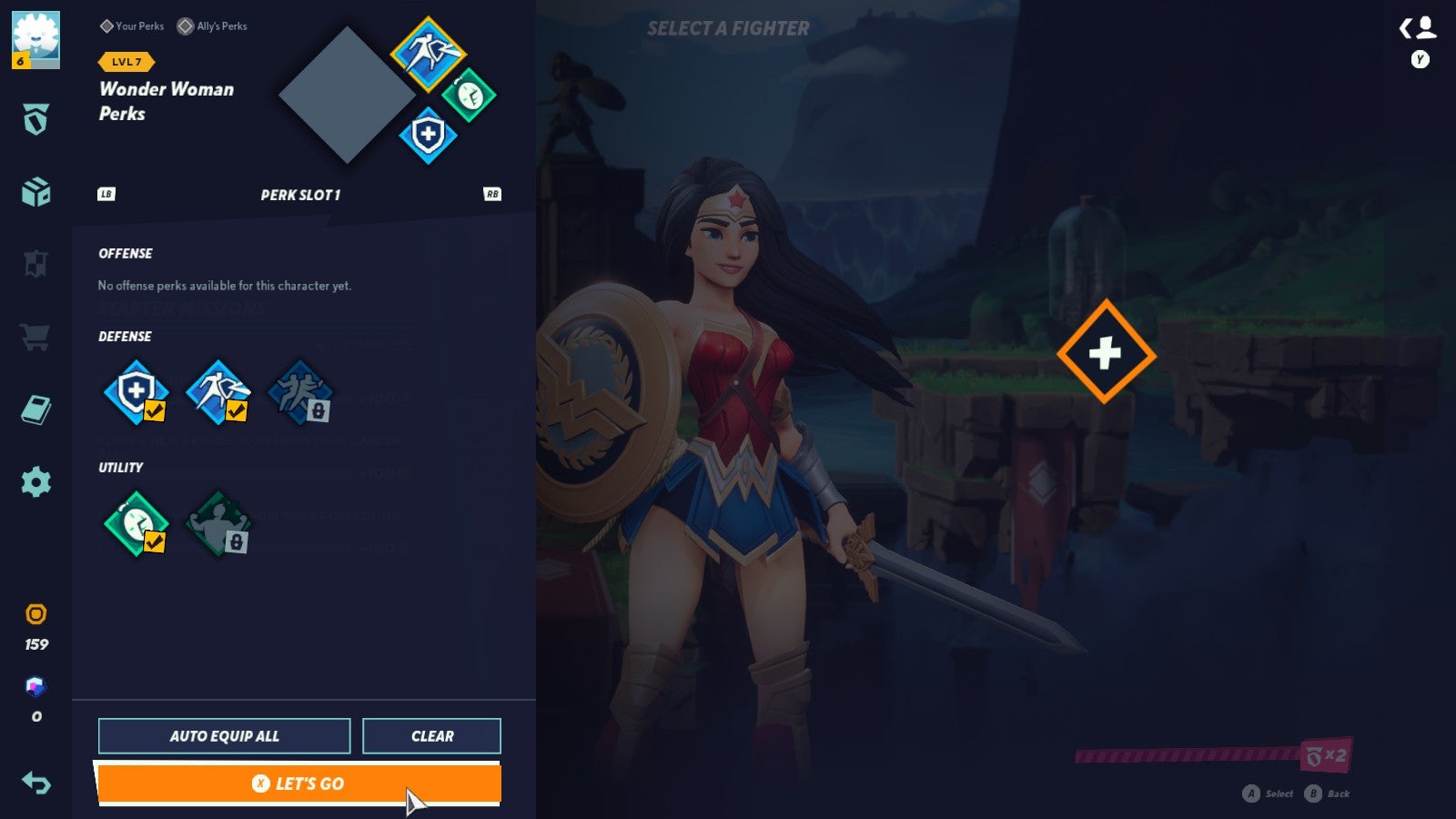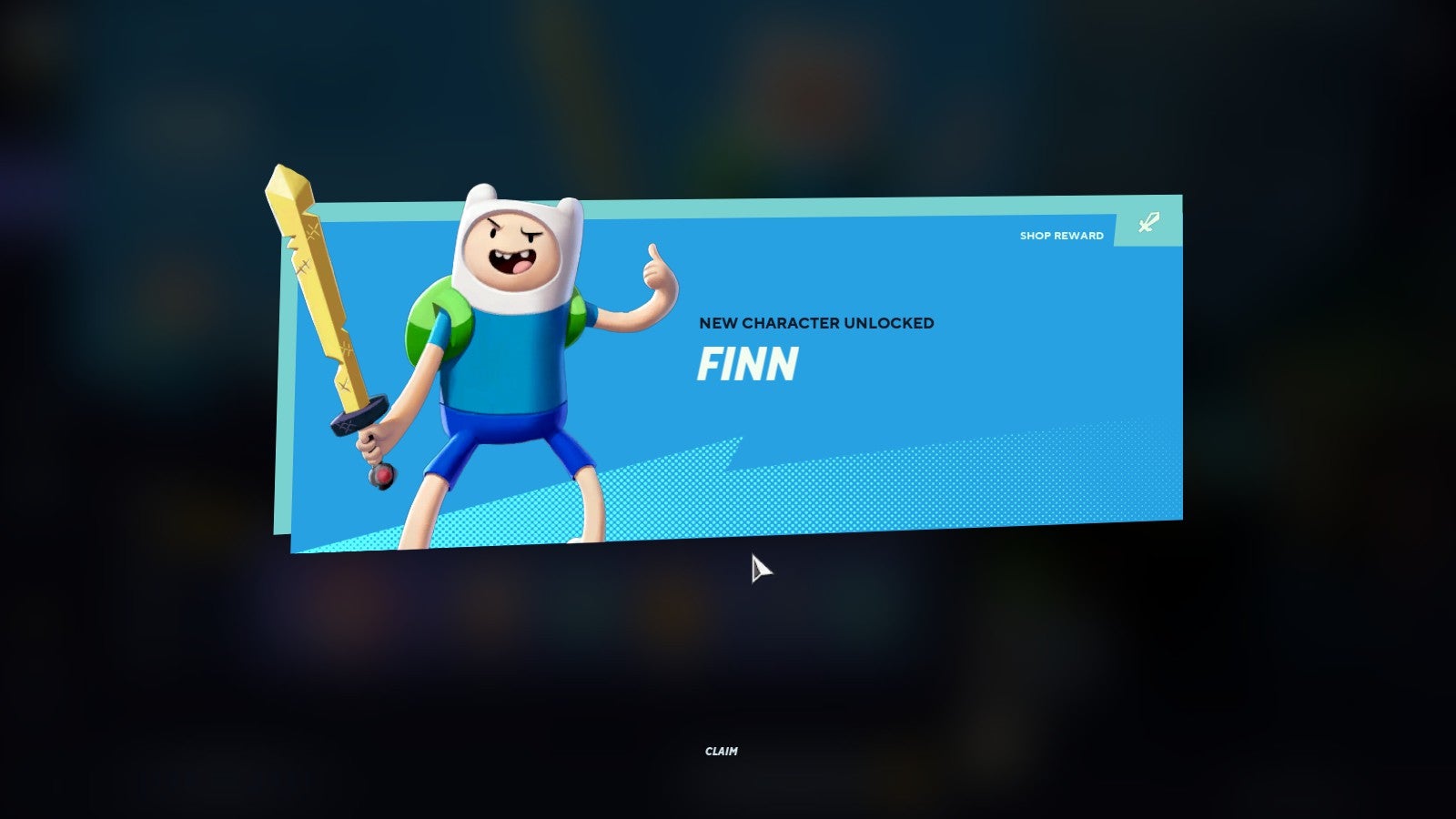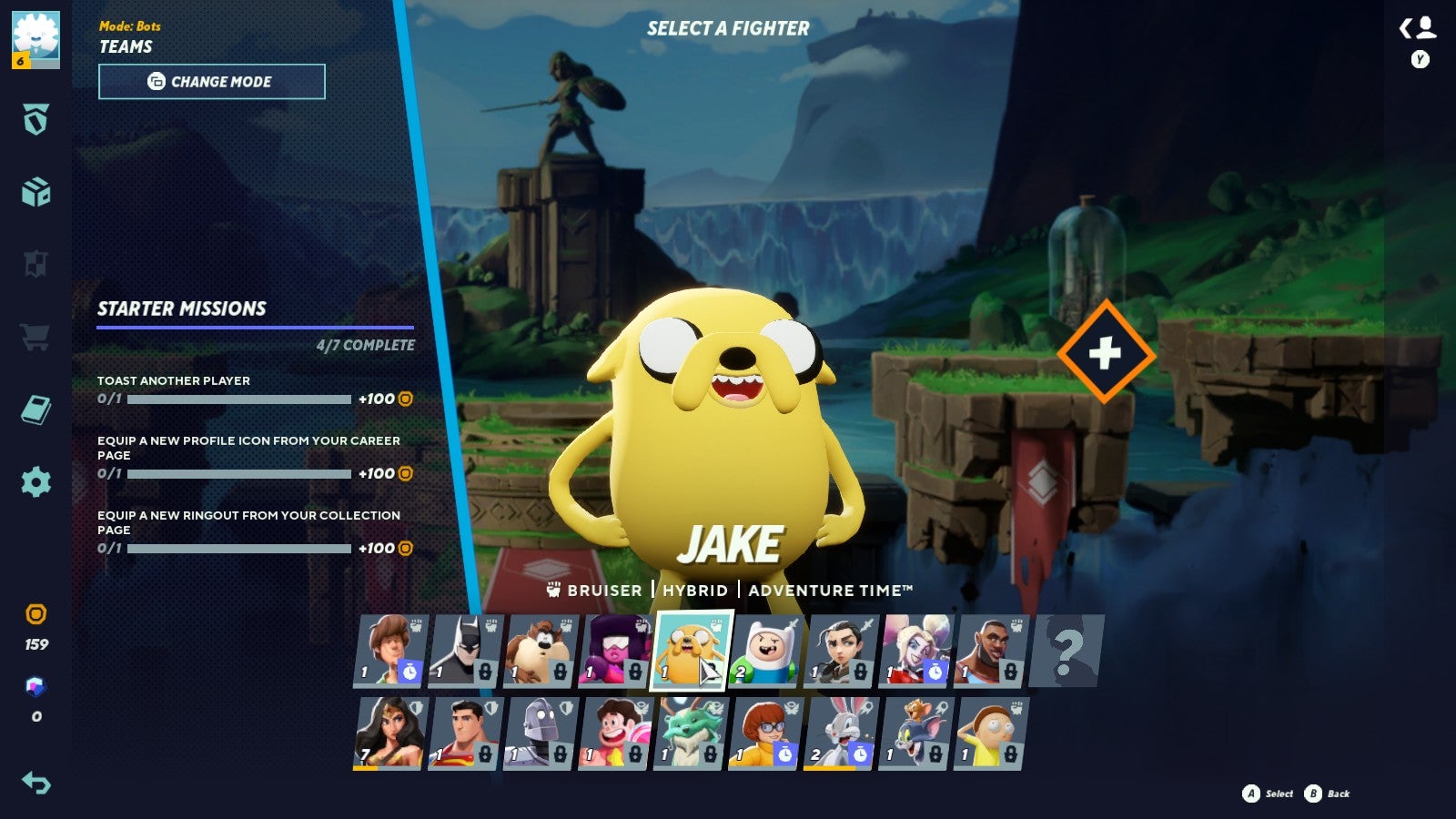You can attribute some of that to the unusual MultiVersus character roster, which isn’t especially cohesive. Packing 18 fighters with more planned, they all fall under Warner Bros. Discovery’s licensing, but mixing Game of Thrones characters with Bugs Bunny just feels strange, no matter how you slice it. That said, I never questioned it once I started playing - everyone’s been well adapted. That’s helped by voice actors reprising their roles, with Kevin Conroy and Matthew Lillard returning for Batman and Shaggy respectively as major highlights. It’s a shame MultiVersus doesn’t give each franchise a specific arena to complement its cast, though you’ll spot familiar sights like the Bat Cave. It’s worth studying each character beforehand, since MultiVersus groups them between five classes. We’ve got the heavy-hitting bruisers, agile assassins, defensively-minded tank class, ranged mages, and support classes who’re better at buffs than damage. I appreciate this variety and the game prioritises 2v2 team fights as its main way to play, those support classes in particular helping MultiVersus to lean into this co-op emphasis well. (There’s also 1v1 fights and 4-player free for all’s but, annoyingly, no local co-op, which is a shame.) This means that simply knowing your own character’s strengths isn’t enough - working together with teammates is essential, with victory requiring a coordinated effort. Thankfully for an open beta, on the character side everything feels surprisingly well-balanced too, slightly stronger exceptions like Finn and Velma aside. What we’ve currently got works well and no character feels unusable. I had a couple of moments where some hit boxes felt slightly off, which isn’t great, though I can’t imagine this won’t be tweaked before the full release. Either way, securing victories feels satisfying. Once a match starts, anyone that’s previously played platform fighters will find this familiar. Like Smash Bros, MultiVersus forgoes traditional health bars for a damage meter, letting you launch foes off the sides of the arena with greater ease upon taking more hits. Each fighter has a dedicated dodge, double jump, and two attack buttons, which vary depending on directional input or if you’re airborne. Easy enough for newcomers, and while I won’t detail every technique going, between strategically timed down spikes, juggling, air combos, and other tactics, there’s a reasonable skill ceiling for the more seasoned veterans, too. Mind those ledges, though - you can’t grab onto them, but you can cling to a wall’s sides and jump up, essentially climbing it. Recoveries feel more skillful as a result, and I’m all for it. Adjusting to these mechanics took time but once I got to grips with MultiVersus, I had great fun in these fights. Combat is suitably frantic but being rudely launched off-stage aside, you feel in control. Movement is nice, landing that well-timed charge attack was enjoyable, and successfully dodging a tricky attack is a rush. When playing online, performance remained smooth, and I never suffered any noticeable lag. That’s thanks to its dedicated server-based rollback netcode, music to any fighting fan’s ears, backed up by full crossplay. Once a match finishes, characters level up individually. This provides several new rewards called “perks”, which let you buff fighters in small but significant ways. Between utility, defensive, and offensive perks, you can equip three at once and if your teammate has a matching perk, it becomes Stacked for increased performance. As examples, Lumpy Space Punch gives your team 5% increased melee attack damage in the air, bumped up to 10% when Stacked. Everyone’s got unique signature perks too, like Iron Giant’s Afterburners ability, which leaves firewalls after igniting his rocket boots. This is where MultiVersus really differs from Smash Bros and there’s some great variety between these picks, encouraging you to experiment with different styles. Will they win you the battle? Not necessarily, though the right perk could provide that extra edge for abilities you may otherwise find lacking. There’s considerable depth to MultiVersus and by making it free to play, it becomes a lot more approachable by removing that initial barrier. My biggest concern here, which I’d apply to most free to play games, lies in monetisation. Right now, only one character, Wonder Woman, is permanently free. Everyone else rotates as a set of four free choices every two weeks. Losing access to your preferred fighter can be frustrating if they aren’t unlocked, though the rotation scheme does encourage trying out others. For those who don’t want to wait, we’ve got two permanent unlock methods. Firstly, you can buy them for 700 Gleamium, premium in-game currency that’s only available in bundles and as reference, 1000 Gleamium costs £7.99/$9.99. Thankfully, the other option isn’t microtransaction reliant, as characters can generally be purchased for 2000-3000 gold coins. Unlike Gleamium, coins are earned via matches or completing challenges and using this method didn’t feel too bad. After an hour, I’d hit 2000 coins and chose Finn. It doesn’t need long, which is great news if you’re eyeing up a certain character. It’s perhaps one of the better implementations I’ve seen with monetisation but if you wanted that extra skin? That’s a different story, no dual unlock methods here. Many are only available with Gleamium, often costing more than the actual character unlock. Other outfits use gold coins and I’m not forgetting the 50-tier battle pass with cosmetic unlocks, which has free and premium tiers. I’m not unreasonable, games need revenue and we’re getting access for free. But when some skins - and I say some, not all - cost 2000 Gleamium alone, that feels excessive. Even with this format, I remain surprised at how much I enjoyed MultiVersus. Taking on Smash was always a tall order and while it doesn’t hit those lofty heights, I can’t say I’ve ever had online matches this smooth in Smash Bros Ultimate. Player First Games has brought us a surprisingly polished platform fighter - and while individual fighter balancing isn’t completely there yet, there’s every chance that’ll change once it leaves open beta. I never imagined a Warner Bros fighting crossover could ever work this well and now, I’m wondering who’ll be added next.


